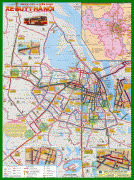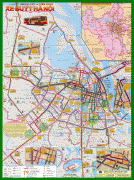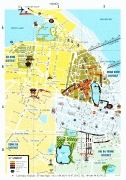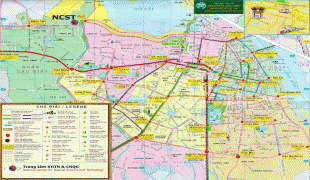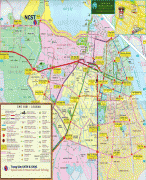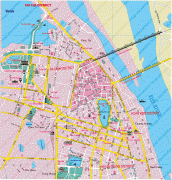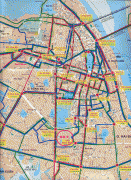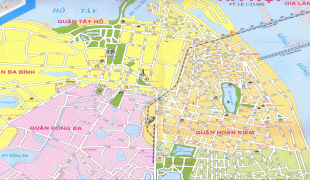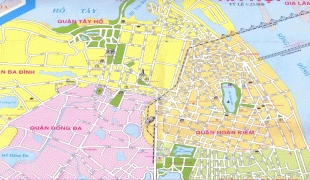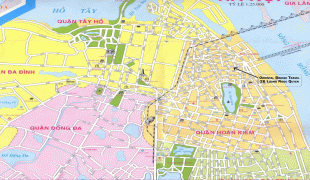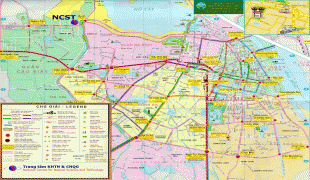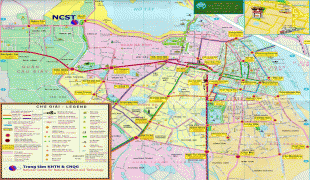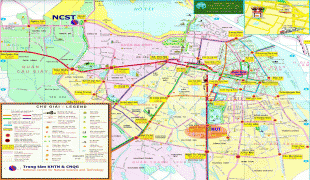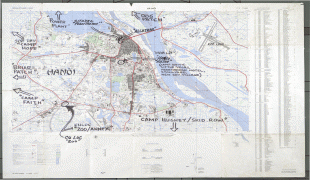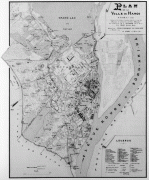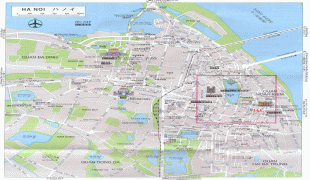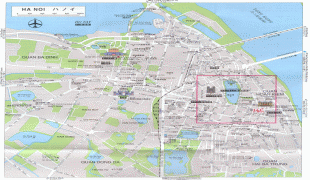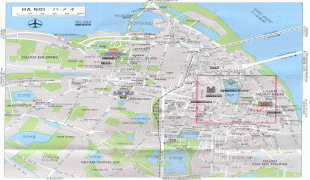Hanoi
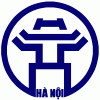 |
Hanoi can trace its history back to the third century BCE, when a portion of the modern-day city served as the capital of the historic Vietnamese nation of Âu Lạc. Following the collapse of Âu Lạc, the city was part of Han China. In 1010, Vietnamese emperor Lý Thái Tổ established the capital of the imperial Vietnamese nation Đại Việt in modern-day central Hanoi, naming the city Thăng Long (literally 'Ascending Dragon'). Thăng Long remained Đại Việt's political centre until 1802, when the Nguyễn dynasty, the last imperial Vietnamese dynasty, moved the capital to Huế. The city was renamed Hanoi in 1831, and served as the capital of French Indochina from 1902 to 1945. On 6 January 1946, the National Assembly of the Democratic Republic of Vietnam designated Hanoi as the capital of the newly independent country, which would last during the First Indochina War (1946–1954) and the Vietnam War (1955–1975). Hanoi has been the capital of the Socialist Republic of Vietnam since 1976.
A major tourist destination in Vietnam, Hanoi offers well-preserved French colonial architecture, religious sites dedicated to Buddhism, Catholicism, Confucianism and Taoism, several historical landmarks of Vietnamese imperial periods, and a large number of museums. The Central Sector of the Imperial Citadel of Thăng Long in Ba Dinh District was recognized as a UNESCO World Heritage Site in 2010.
Hanoi has a high Human Development Index of 0.799, top amongst all the municipalities and provinces of Vietnam. The city hosts various venerable educational institutions and cultural venues of significance, including the Vietnam National University, the Mỹ Đình National Stadium, and the Vietnam National Museum of Fine Arts. Hanoi was the only Asia-Pacific locality to be granted the "City for Peace" title by the UNESCO on 16 July 1999, recognizing its contributions to the struggle for peace, its efforts to promote equality in the community, protect the environment, promote culture and education, and care for younger generations. Hanoi joined UNESCO's Network of Creative Cities as a Design City on 31 October 2019, on the occasion of World Cities' Day. The city has also hosted numerous political and international events, including APEC Vietnam 2006, 132nd Assembly of the Inter-Parliamentary Union (IPU-132), 2019 North Korea–United States Hanoi Summit, as well as 2009 Asian Indoor Games, and the Southeast Asian Games in 2003 and 2021.
Hanoi had various names throughout history.
* It was known first as Long Biên (龍邊, "dragon edge"), then Tống Bình (宋平, "Song peace") and Long Đỗ (龍肚, "dragon belly"). Long Biên later gave its name to the famed Long Biên Bridge, built during French colonial times, and more recently to a new district to the east of the Red River. Several older names of Hanoi feature long (龍, "dragon"), linked to the curved formation of the Red River around the city, which was symbolized as a dragon.
* In 866, it was turned into a citadel and named Đại La (大羅, "big net"). This gave it the nickname La Thành (羅城, "net citadel"). Both Đại La and La Thành are names of major streets in modern Hanoi.
* When Lý Thái Tổ established the capital in the area in 1010, it was named Thăng Long (昇龍, "rising dragon"). Thăng Long later became the name of a major bridge on the highway linking the city center to Nội Bài Airport, and the Thăng Long Boulevard expressway in the southwest of the city center. In modern time, the city is usually referred to as Thăng Long – Hà Nội, when its long history is discussed.
* During the Hồ dynasty, it was called Đông Đô (東都, "eastern metropolis").
* During the Ming occupation, it was called Đông Quan (東關, "eastern gate").
Map - Hanoi
Map
Country - Vietnam
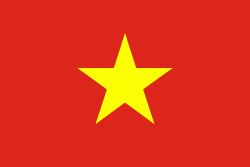 |
 |
| Flag of Vietnam | |
Vietnam was inhabited by the Paleolithic age, with states established in the first millennium BC on the Red River Delta in modern-day northern Vietnam. The Han dynasty annexed Northern and Central Vietnam under Chinese rule from 111 BC, until the first dynasty emerged in 939. Successive monarchical dynasties absorbed Chinese influences through Confucianism and Buddhism, and expanded southward to the Mekong Delta, conquering Champa. The Nguyễn—the last imperial dynasty—surrendered to France in 1883. Following the August Revolution, the nationalist Viet Minh under the leadership of communist revolutionary Ho Chi Minh proclaimed independence from France in 1945.
Currency / Language
| ISO | Currency | Symbol | Significant figures |
|---|---|---|---|
| VND | Vietnamese đồng | ₫ | 0 |
| ISO | Language |
|---|---|
| KM | Central Khmer language |
| ZH | Chinese language |
| EN | English language |
| FR | French language |
| VI | Vietnamese language |







